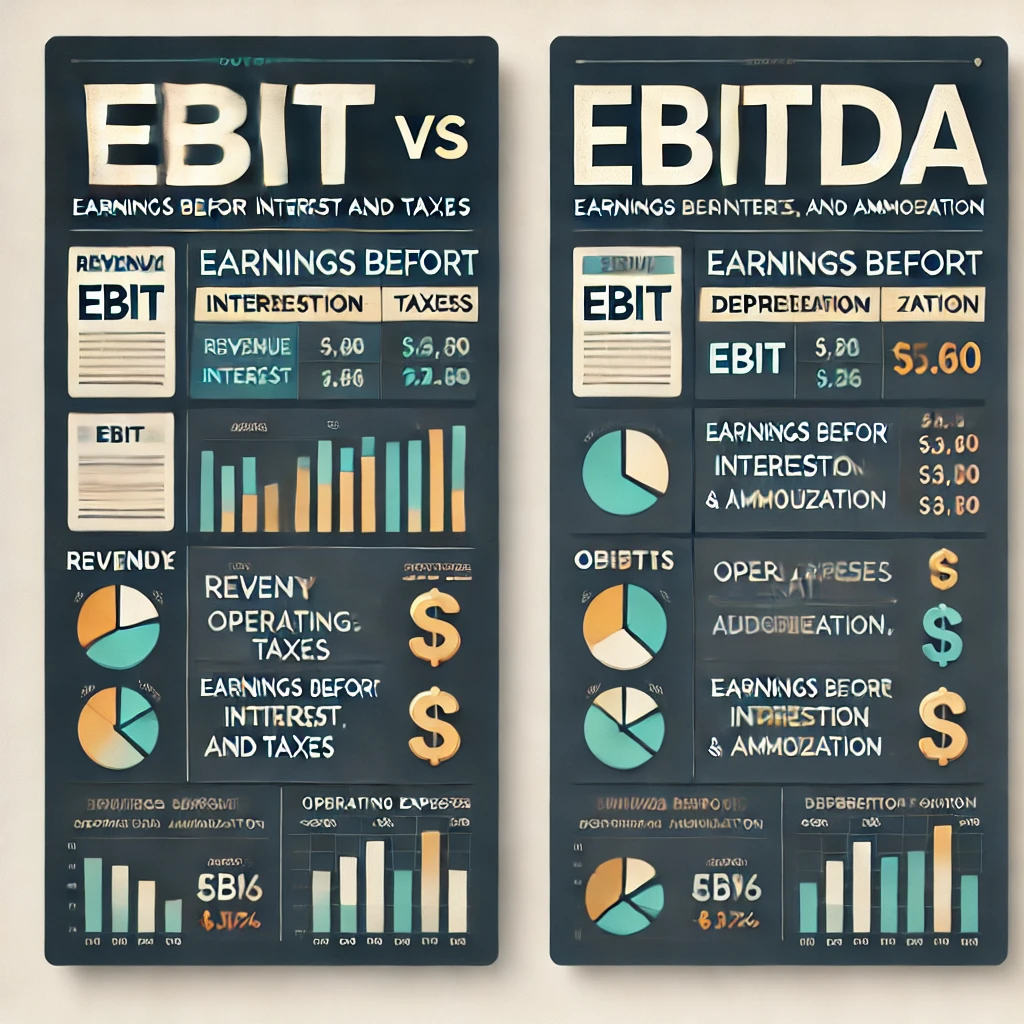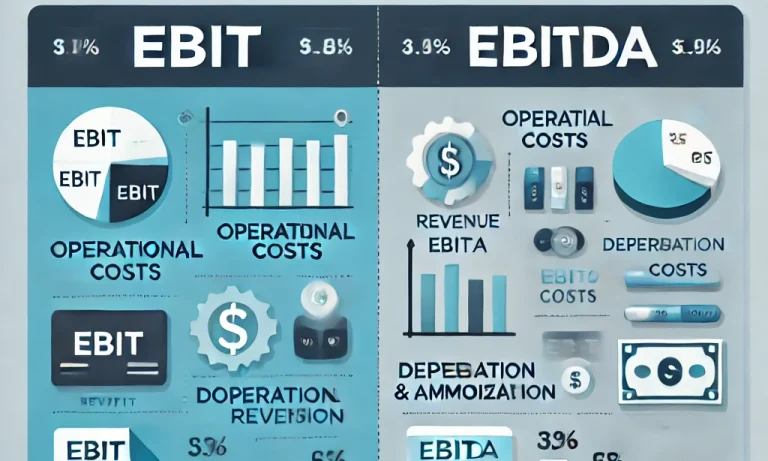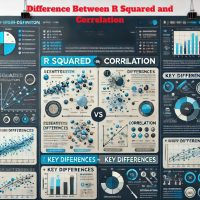While discussing a company’s profitability and financial performance, two key financial metrics are usually involved in the conversation: EBIT and EBITDA. The crux of the difference between EBIT and EBITDA lies in how each measure deals with expenses like depreciation, amortization, and interest. EBIT (Earnings Before Interest and Taxes) and EBITDA are widely used as gauges of how well a company can operate in terms of profitability, yet in different ways, they do not include the same costs.
What is EBIT?
EBIT full form is Earnings Before Interest and Taxes. This is the profit a company generates from a set of core operations, ignoring all direct and indirect interest expenses and tax obligations. It helps in understanding how much this company can generate based solely on its operations, irrespective of the sources or methods of financing and tax. It provides insight into the operating efficiency of a business just taking revenues and direct operational costs into consideration.
How EBIT Reflects Operational Performance
EBIT is the revenue of a business, minus the cost of goods sold and operating expenses (wages, rent, and every other expense directly attributed to running the business). However, interest on debt and taxes are not included. The latter can change in response to many variables concerning the company’s capital structure and tax policies. Consequently, EBIT is a clearer measure of the performance of the business regarding its core operations.
How to Calculate EBIT
To calculate EBIT, you can follow this simple formula:
EBIT=Revenue−Cost of Goods Sold (COGS)−Operating Expenses
For example, let’s say a company has $10 million in revenue, $4 million in COGS, and $2 million in operating expenses. The EBIT would be:
EBIT=10,000,000−4,000,000−2,000,000=4,000,000
In this case, the EBIT is $4 million, which means the company earned $4 million from its operations before considering interest and tax payments.
EBIT EPS Analysis
EBIT often appears when dealing with EPS due to its ability to exclude interest expenses, giving an image of a company’s operational profitability without regard for how the business is financed. Excluding both interest and taxes, EBIT assists investors in understanding how well a company is performing in generating earnings from core operations beyond the capital structure it adheres to.
A solid EBIT is usually a good indication for investors because it shows the company’s ability to generate income through operations. However, when considered with EPS, EBIT may help an investor form a more concrete conclusion about whether a company’s operating performance is flowing through to shareholder value.

What is EBITDA?
EBITDA stands for Earnings Before Interest, Taxes, Depreciation, and Amortization. Similar to EBIT, EBITDA is a measure used to ascertain profitability in a business operating from core sources. What is different between EBIT and EBITDA, though, lies in another exclusion: depreciation and amortization. Depreciation represents a decrease in the value of physical assets, while amortization relates to the gradual expensing of intangible assets.
How EBITDA Gives a Broader View of Operational Performance
EBITDA often forms a better margin and profitability measure than EBIT because it eliminates non-cash items, including depreciation and amortization, and financial costs, such as interest. This offers a clearer picture of a company’s ability to generate cash flow from its core business, mainly for capital-intensive industries where depreciation is high.
It is quite beneficial in the comparison of companies with different investments in fixed assets and capital structure. Since it does not take into account the depreciation or amortization that vary based on asset value and accounting practices, EBITDA permits more accurate comparisons of companies, especially those in industries like manufacturing, energy, or telecommunications.
How to Calculate EBITDA
To calculate EBITDA, you can use the following formula:
EBITDA=EBIT+Depreciation+Amortization
Alternatively, if the net income is available, EBITDA can be calculated by adding back interest, taxes, depreciation, and amortization to the net income:
EBITDA=Net Income+Interest+Taxes+Depreciation+Amortization
For example, if a company has an EBIT of $4 million, $1 million in depreciation, and $500,000 in amortization, the EBITDA would be:
EBITDA=4,000,000+1,000,000+500,000=5,500,000
In this case, the EBITDA would be $5.5 million, reflecting the company’s ability to generate cash from operations before accounting for depreciation, amortization, taxes, and interest.
Difference Between EBIT and EBITDA
The basic difference between EBIT and EBITDA is how these metrics treat the concept of depreciation and amortization. EBIT explicitly excludes both interest and tax expenses, whereas, in addition to the exclusion of interest and taxes, EBITDA excludes non-cash charges like depreciation and amortization as well. The significance of this difference lies in operating profit analysis when the industry has high capital expenditure projects, be it manufacturing or transportation.
While EBIT focuses on earnings from operations, including the costs of tangible and intangible assets, EBITDA presents a clearer view of the potential cash flow for a company by removing those factors. So companies with high capital expenditures often consider EBITDA as a better metric for measuring because it measures the ability to generate cash from operations and does not take financing decisions into consideration or the loss in the value of assets over time.
| Feature | EBIT | EBITDA |
|---|---|---|
| Exclusions | Excludes interest and taxes | Excludes interest, taxes, depreciation, and amortization |
| Focus | Operational profitability before interest and taxes | Cash flow from operations before non-cash expenses |
| Depreciation/Amortization | Included in operating expenses | Excluded to focus on cash flow |
| Usage | General profitability measurement | Cash flow and operational performance in capital-intensive industries |
| Better for | Evaluating profitability from core operations | Comparing companies in asset-heavy industries |
| Impact of Capital Structure | Affected by financing decisions (interest) | Less affected by capital structure |
| Non-Cash Charges | Includes depreciation and amortization | Excludes depreciation and amortization |
EBIT and EBITDA FAQs
What is the main difference between EBIT and EBITDA?
The main difference between EBIT and EBITDA is that EBIT includes depreciation and amortization in its calculation, while EBITDA excludes these non-cash expenses. Company’s ability to generate cash flow with the use of EBITDA, while EBIT focuses on operational profitability.
Why EBITDA is a better measure of cash flow?
A better measure of cash flow is EBITDA. It removes non-cash expenses such as depreciation and amortization, giving a clearer picture of a company’s ability to generate cash from its core operations.
Which metric should investors focus on: EBIT or EBITDA?
It depends on the context. Investors typically use EBIT when they want to focus on a company’s operational efficiency and profitability. While EBITDA is preferred when evaluating cash flow generation, particularly in asset-heavy industries.
Can we use EBIT and EBITDA interchangeably?
No, EBIT and EBITDA are not interchangeable. While both provide insight into a company’s profitability, EBITDA is more focused on cash flow, whereas EBIT provides a clearer view of profitability from core operations, factoring in depreciation and amortization.
Why do companies use both EBIT and EBITDA?
Companies use both EBIT and EBITDA because each provides a different perspective. EBIT helps in understanding operational profitability before interest and taxes, while EBITDA gives a clearer picture of cash flow generation, excluding non-cash expenses and tax impacts. Both metrics are valuable for different types of financial analysis.


